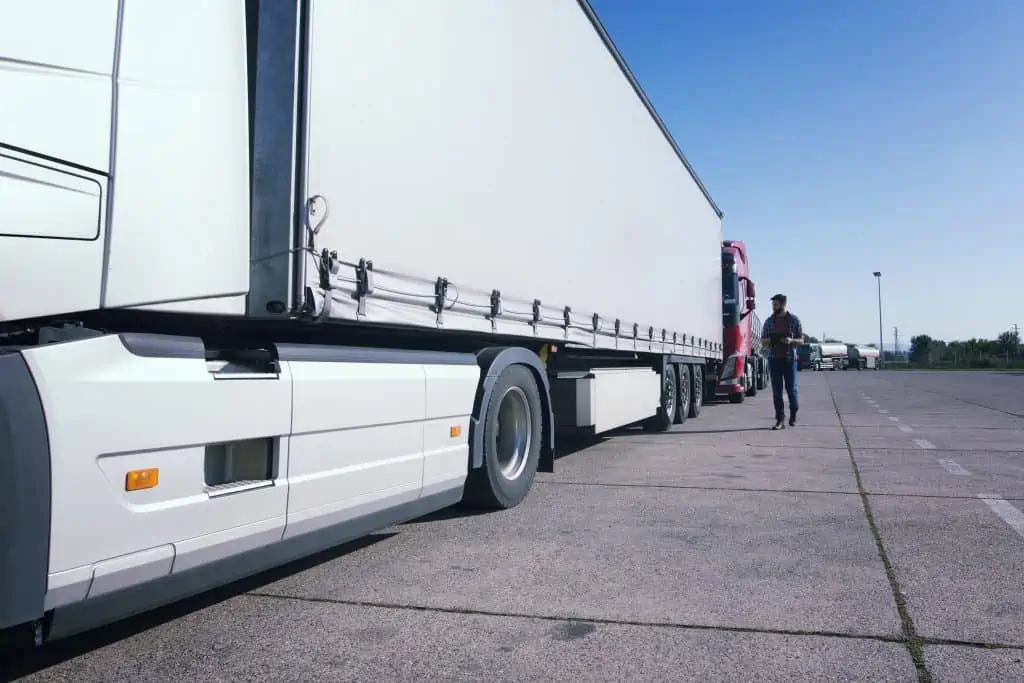Amid the COVID-19 pandemic and resulting supply chain issues that made many goods scarce, a little-known worker, the American truck driver, came to light in the news and media. It turned out that the trucker’s job was intricately linked to the delivery of our must-have goods–from dog food to coffee.
The American trucker is the long-haul driver who carries goods across state lines in a trailer to ensure we can feed Fido his Cesar’s filet-mignon pate and give Susie her favorite juice box.

During the pandemic, the trucker was celebrated as a hero working on the front lines to keep our lives somewhat predictable by delivering all the things we need. Now, as the pandemic has subsided and supply chain issues are easing somewhat, we’ve gone back to expectations of having our things readily available. Perhaps some appreciation for the truck driver who delivers our goods has waned. And before the pandemic, did we ever even think about how our supplies traveled from point A to point B?
One issue has remained at the forefront of the media and news– there is a real and concerning trucker shortage. Just a little digging on the web will show you the following information in several articles. Cited in theNY Times in November 2021:
“Last year, trucking companies in the United States suffered a record deficit of 80,000 drivers, according to the American Trucking Associations, a trade association. Given that trucks move 72 percent of American freight, a lack of drivers spells substantial disruption.”
This article goes on to explain that others in the trucking and transportation industry would dispute this statement, that saying there is a shortage of drivers is misleading. And after a little more digging, it turns out that it likely is. According to this article in the Times:
“There’s no shortage of workers, that’s the narrative that gets propagated by industry leaders,” says Mike Chavez, the executive director of the Inland Empire Labor Institute, which is working on a partnership to create better recruiting and retention programs for drivers. “We still have a lot of positions that can’t be filled because of the working conditions.”
In reality, there is a trucker shortage, but it is not because there are not enough truckers with commercial licenses. It is a problem of retention and recruitment that is causing a shortage.
“As the trucking association itself noted, more than 10 million Americans held commercial driver’s licenses in 2019. That was nearly triple the 3.7 million trucks that required a driver holding that certification.” (Source: NYTIMES)
The truth is that the life of a trucker is a rough one. Multiple complications come from life on the road: from poor living and working conditions to being away from family for long periods of time to simply not having a place–or even a safe place– to park your trailer at night. The lifestyle is not for everyone.
Recruiting Issues in The Trucking and Transportation Industry

As part of the process of becoming a trucker, many will drop out of the lifestyle soon after they have their commercial license or realize during their training period that the trucker life is not for them.
It’s during this stage that many people drop out, either because their trainers aren’t helpful, or they get intimidated by ice on the road, or because they’re not making much money as a team driver. But long-haul trucking companies move a lot of their freight through student-driver partnerships like these. When student drivers quit, the companies just have more trainees to sub in, fed into the industry by the myth of a trucker shortage. “Over-recruiting is the biggest part of the problem,” says Wood. (Source: TIMES)
In addition, the trucker workforce itself is aging. “In the US, the average age of a truck driver is 46, according to a 2019 report from the American Trucking Associations.” (Source: VOX)
Many truckers who have been on the road for decades are nearing retirement.
What Needs to Change?
Many would say that to fix the recruitment and retention issue in the trucking industry. It’s time to change the culture. Changing the culture would make it inviting for more to enter the industry and stay. It would also invite more demographics, such as women who make up 50% of the entire workforce and younger people considering a future career.
Make The Industry Safe for Women

There are efforts and even associations devoted to making the job more secure, safe, and appealing for women, like Women in Trucking. Traditionally, the trucking workforce is 90% male. Reasons for this include the lifestyle of being on the road handling heavy equipment, but there are other factors that can change. The job needs to be a safe one for women to enter.
“Trucking is a male-dominated industry, and the standard equipment used every day reflects that. Women in the industry have been pushing manufacturers to adjust difficult-to-manage equipment to fit individuals of all strengths. This responsibility falls on each trucking company to show proactive actions to strive for every woman working there to feel safe at all times of the job. Without the employer’s support, women will continue to feel vulnerable to potential harassment.” (Source: Trucks.com)
Trucks.com goes on to cite four simple changes that could make a huge difference in trucking workforce diversity:
- Gender-specific bathrooms at truck stops
- More places to park; technology that shows where spaces are available
- Safety while on night shift
- Promoting gender equality through recruiting practices
- Accessible training.
Recruit Younger Drivers
Historically, drivers under the age of 21 were unable to haul across state lines. In addition to recruiting women, getting younger drivers on the road would open up new opportunities for many. As a result, congress recently passed a pilot program to create an apprenticeship for drivers under 21 to cross state lines after meeting proper training requirements (Source: FMCSA.org).
So what are the advantages to entering the trucking industry? First, no college degree is required, and there is a low barrier of entry. Training and obtaining your commercial driver’s license are all that are required. Starting salary pay is around $40-50,000 per year. Owner-operators can earn up to $200,000 per year.
Use technology to your advantage. High tech recruiting companies like Inflection Poynt can help find, screen, and hire quality driver candidates.
How Do Companies Attract New Drivers?
Company culture from the top down needs to promote safety in the workplace to attract female drivers, promote the advantages of a career in trucking to attract younger drivers, and add more supportive tools for truckers like guiding them to safe, available places to park at night, and giving truckers ongoing incentives for a job well done to keep them from finding a new employer or leaving the industry altogether.



